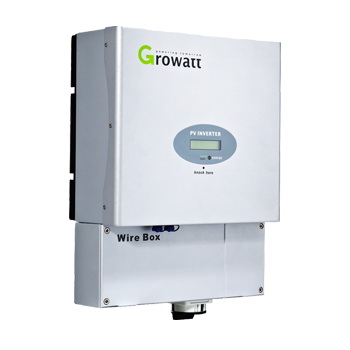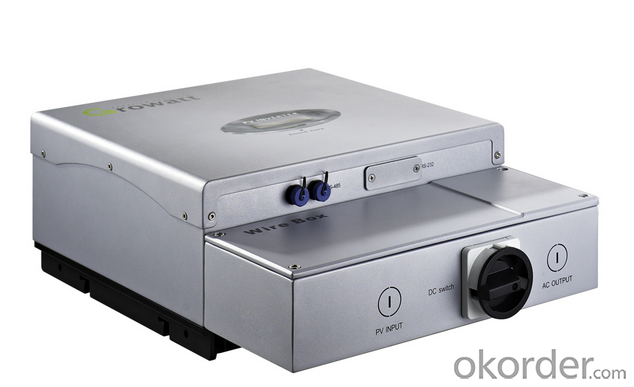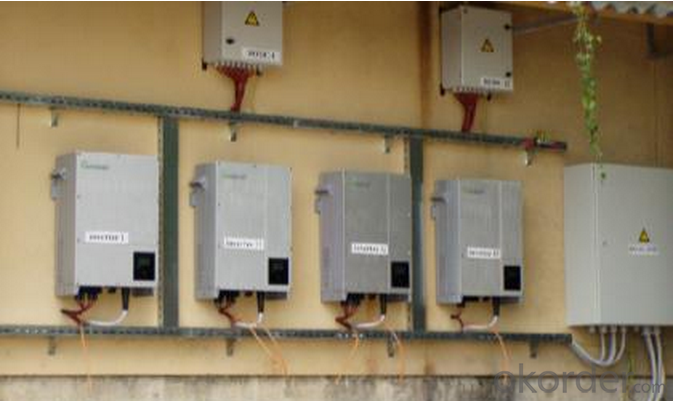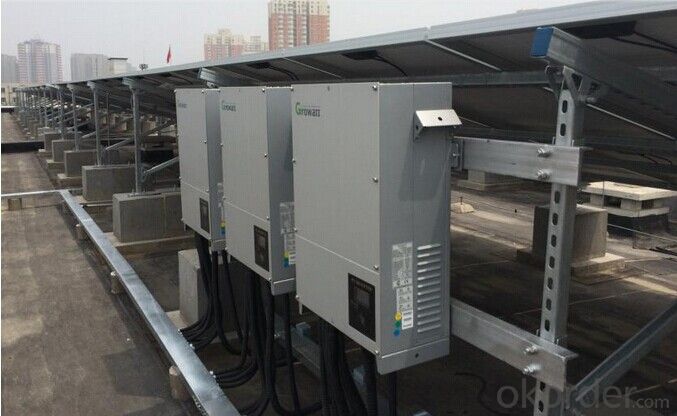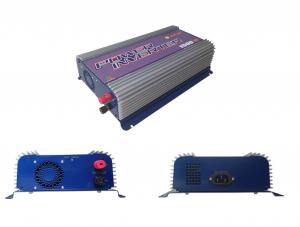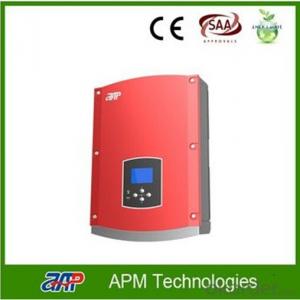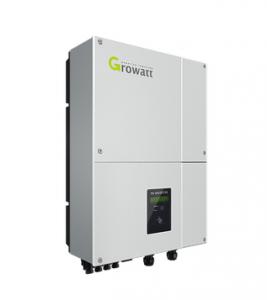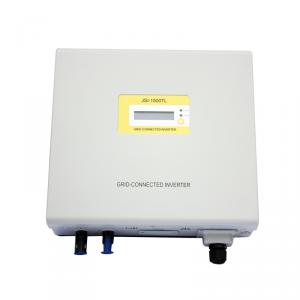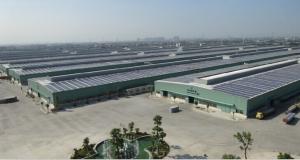Schuco Solar Inverter 1500w Solar Grid Tie Inverter Transformerless 1.5kw String Inverter ETL/FCA
- Loading Port:
- Shekou
- Payment Terms:
- TT or LC
- Min Order Qty:
- 10 pc
- Supply Capability:
- 100000 pc/month
OKorder Service Pledge
OKorder Financial Service
You Might Also Like
1500w solar grid tie inverter transformerless 1.5kw string inverter ETL/FCA
Solar inverter 1500TL-3000TL-US
Maximum efficiency of 97.5% and wide input voltage range
Internal DC Switch
Transformerless GT topology
Compact design
Bluetooth/ RF technology/ Zigbee/ Wi-Fi
Sound control
Easy installation
General Descriptions
Leading-Edge Technology, CE,TUV ,VDE , SAA,DK5940 Certicificates.
> Maximum efficiency of 97.8 % and wide input voltage range
> Internal DC STWTICH
> Transformerless H6 topology
> Compact Design
> MPPT control
> MTL-String
> RS485 RS432 bluetooth Technology
> Comprehensive Growatt warranty program
> Easy country configuration, easy installation
> Multi-language display
Communications
> RS485 /GPRS interfaces
> Computer monitoring software
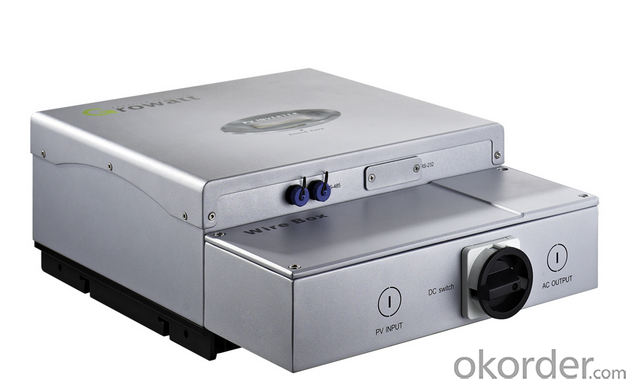
1500-US | 2000-US | 3000-US | |
| Inputdata | |||
Max.DCpower | 1800W | 2300W | 3200W |
Max. DC voltage | 450V | 500V | 500V |
Start Voltage | 150V | 150V | 150V |
PV voltage range | 100V-450V | 100V-500V | 100V-500V |
MPP voltage range(full load) | 120V-400V | 120V-450V | 120V-450V |
Max. input current of per MPP tracker | 12A | 14A | 17A |
Number of independent MPP | 1/1 | 1/2 | 1/2 |
Rated AC output power | 1500W@208Vac | 1800W@208Vac | 2500W@208Vac |
AC nominal voltage; range | Default:240V single phase, optional:208 single phase;183-228@208V,211-264V@240V | ||
Max. output current | 8A/7.8A | 9.7A/9.4A | 15A/14.2A |
AC grid frequency; range | 60Hz; 59.3-60.5Hz | 60Hz; 59.3-60.5Hz | 60Hz; 59.3-60.5Hz |
Power factor | 1 | 1 | 1 |
THDI | <3% | <3% | <3% |
Grid connection type | Single phase | Single phase | Single phase |
| Efficiency | |||
Max.efficiency | 97% | 97% | 97% |
| Protection Devices | |||
DC reverse polarity protection | yes | yes | yes |
DC switch rating for each MPPT | yes | yes | yes |
Output over current protection | yes | yes | yes |
Output over voltage | yes | yes | yes |
Ground fault monitoring | yes | yes | yes |
Grid monitoring | yes | yes | yes |
Integrated all-pole sensitive | yes | yes | yes |
| Generaldata | |||
Dimensions(W/H/D) in mm | 360/465/165 | 360/465/165 15.1KG | 360/465/165 |
| Features | |||
DC connection AC connection Display | Screw terminal Screw terminal LCD opt/opt/opt | Screw terminal Screw terminal LCD yes/yes/ opt/opt/opt | Screw terminal Screw terminal LCD yes/yes/ opt/opt/opt yes/opt |
| Certificates and Approvals UL1741, UL1998, IEEE 1547, CSA C22.2 No.107.1-1, FCC Part15(Class A&B) |
FAQ
1. Have any design tool and how to use it?
Shine Design is the system design software just for inverters, It can conduct installers to figure out panel numbers for a system, panel numbers for each string, and which inverter model is suitable for the system. Moreover, it can print a design report after input all necessary parameters, can calculate DC/AC wire wastage, annual generation, etc.
2. Does the inverter have monitoring solutions for residential system?
For small rating system, we have wired two monitoring solution (ShineNet via RS232 or RS485). (a) Local wireless monitoring solution (ShineVision via RF module communication) (b) Global wireless monitoring solution (WIFI module via WIFI network)
3. Do you have free solution for monitoring?
ShineNet is an inverter monitoring software run in Windows XP, Windows Vista, Windows 7 operating system. It can monitor inverter via RS232 (or RS232 convert to USB cable) and RS485 wire connection. Customers can purchase the cable locally to get the inverter monitored, it is simple.
- Q: Can a solar inverter be used with a solar-powered water pumping system?
- Yes, a solar inverter can be used with a solar-powered water pumping system. The solar inverter converts the direct current (DC) produced by the solar panels into alternating current (AC), which is necessary to power the water pump. By utilizing a solar inverter, the energy generated by the solar panels can be efficiently transferred to the water pumping system, allowing it to operate using clean and renewable energy.
- Q: How does a solar inverter affect the overall system performance in different weather conditions?
- A solar inverter plays a crucial role in the overall performance of a solar power system in various weather conditions. It helps optimize the conversion of direct current (DC) generated by solar panels into alternating current (AC) that is used to power homes and businesses. During sunny weather, a high-quality inverter ensures maximum power extraction from the solar panels, resulting in higher energy production and improved system performance. In contrast, in overcast or low-light conditions, a well-designed inverter can still efficiently convert the available solar energy, albeit at a reduced capacity. Moreover, advanced inverters often incorporate technologies like maximum power point tracking (MPPT) to adapt to changing weather conditions, ensuring optimal performance and energy generation regardless of weather variations.
- Q: How does a solar inverter handle harmonic distortion?
- A solar inverter handles harmonic distortion by incorporating various filtering and control mechanisms. These mechanisms help to minimize and mitigate the impact of harmonic distortion caused by the non-linear loads associated with solar panels. The inverter typically employs filters and algorithms that actively monitor and adjust the output waveform to reduce harmonics. This ensures that the generated electricity is of high quality and meets the required standards for grid connection.
- Q: Can a solar inverter be used in harsh environmental conditions?
- Yes, a solar inverter can be used in harsh environmental conditions. Most solar inverters are designed to withstand a wide range of environmental factors such as extreme temperatures, humidity, dust, and vibrations. They are often built with durable materials and have protective coatings to prevent damage from harsh weather conditions. Additionally, many solar inverters are equipped with advanced cooling mechanisms to prevent overheating in hot climates. However, it is important to note that the specific durability and performance of a solar inverter in harsh conditions may vary depending on the brand and model. It is recommended to choose a reliable and high-quality solar inverter that is specifically designed for use in harsh environmental conditions to ensure optimal performance and longevity.
- Q: Can a solar inverter be used in areas with high dust and dirt accumulation?
- Yes, a solar inverter can be used in areas with high dust and dirt accumulation, but it is important to take certain precautions and maintenance measures to ensure its proper functioning. Dust and dirt can accumulate on the surface of the solar panels, reducing their efficiency over time. This can also affect the performance of the solar inverter since it relies on the energy generated by the solar panels. To mitigate the impact of dust and dirt, regular cleaning of the solar panels is essential. This can be done by using a soft brush or sponge and mild detergent mixed with water. It is important not to use abrasive materials or excessive water pressure, as this can damage the panels. Additionally, installing the solar panels at an angle and positioning them to face the sun can help in reducing the accumulation of dust and dirt. Moreover, some solar inverters are designed with built-in protection against dust and dirt. These inverters usually have IP65 or higher ratings, which means they are dust-tight and can withstand water jets. Choosing such inverters can provide an added layer of protection against the adverse effects of dust and dirt accumulation. Overall, while a solar inverter can be used in areas with high dust and dirt accumulation, regular maintenance and proper cleaning of the solar panels are crucial to ensure optimal performance and longevity of the system.
- Q: How does a solar inverter handle shading or partial panel obstructions?
- A solar inverter handles shading or partial panel obstructions by employing a technique called maximum power point tracking (MPPT). MPPT allows the inverter to constantly monitor the output of each individual solar panel and adjust its operating conditions to maximize power production. When shading or partial obstructions occur, the inverter intelligently redistributes the power flow to avoid any significant drop in overall system performance. This ensures that the panels operate at their optimal efficiency, even under less than ideal conditions.
- Q: How does a solar inverter protect against overvoltage or overcurrent?
- A solar inverter protects against overvoltage or overcurrent by constantly monitoring the electrical output from the solar panels. It uses built-in protection mechanisms such as surge protectors, voltage regulation circuits, and current limiters to prevent the voltage or current from exceeding safe levels. If an overvoltage or overcurrent event occurs, the inverter will automatically shut down or reduce the output to protect the system and connected devices from potential damage or failure.
- Q: What is the role of a solar inverter in preventing underperformance?
- The role of a solar inverter in preventing underperformance is to convert the direct current (DC) produced by solar panels into alternating current (AC) that can be used by electrical appliances. By efficiently converting and optimizing the power output from the solar panels, the inverter ensures that the system operates at its maximum capacity, minimizing any potential underperformance issues due to factors such as shading, temperature fluctuations, or system faults. Additionally, advanced inverters can monitor and analyze the performance of the solar system, detecting any abnormalities or inefficiencies that may lead to underperformance and allowing for timely troubleshooting and maintenance.
- Q: What are the key differences between a central inverter and a string inverter?
- The key differences between a central inverter and a string inverter lie in their design and functionality. A central inverter is a large, centralized unit that converts the DC electricity generated by a solar array into AC electricity. It is typically installed in a central location, such as a utility room, and is responsible for converting the power from multiple strings of panels simultaneously. On the other hand, a string inverter is a smaller unit that is installed close to the solar panels and converts the DC power from each individual string into AC power. One major difference is the level of scalability. Central inverters are typically used in larger solar installations, such as commercial or utility-scale projects, where a large number of panels are connected in parallel. They can handle high power capacities and are highly efficient. In contrast, string inverters are commonly used in smaller residential or small-scale commercial installations, where a smaller number of panels are connected in series. They offer flexibility in system design and can be easily expanded or modified. Another difference is the impact of shading or module mismatch. In a string inverter system, if one panel in a string is shaded or experiences reduced performance, it can affect the overall output of the entire string. This is because all panels in a string are connected in series, and the output is limited by the weakest performing panel. In a central inverter system, however, the impact of shading or module mismatch is minimized as each string operates independently, allowing for better performance optimization. Additionally, maintenance and monitoring differ between the two types. Central inverters are easier to access and maintain as they are typically installed in a dedicated location. They also offer advanced monitoring capabilities, allowing for centralized tracking of system performance. String inverters, being installed close to the panels, require more individual maintenance and monitoring efforts. Both central and string inverters have their own advantages and disadvantages, and the choice between them depends on factors such as project size, system design, shading conditions, and budget.
- Q: Are there any safety risks associated with solar inverters?
- Yes, there are potential safety risks associated with solar inverters. These risks can include electrical hazards, such as electric shock or fire, especially if the inverter is not installed or maintained correctly. Additionally, there is a possibility of arc flash incidents and potential exposure to high voltage DC electricity. It is important to follow proper installation and maintenance procedures, as well as adhere to safety guidelines provided by manufacturers and professionals, to mitigate these risks and ensure safe operation of solar inverters.
Send your message to us
Schuco Solar Inverter 1500w Solar Grid Tie Inverter Transformerless 1.5kw String Inverter ETL/FCA
- Loading Port:
- Shekou
- Payment Terms:
- TT or LC
- Min Order Qty:
- 10 pc
- Supply Capability:
- 100000 pc/month
OKorder Service Pledge
OKorder Financial Service
Similar products
Hot products
Hot Searches
Related keywords





